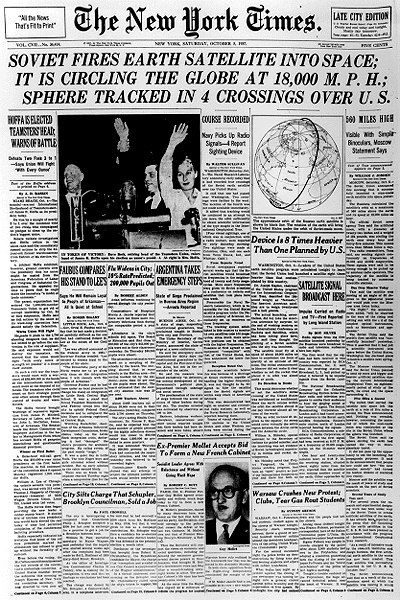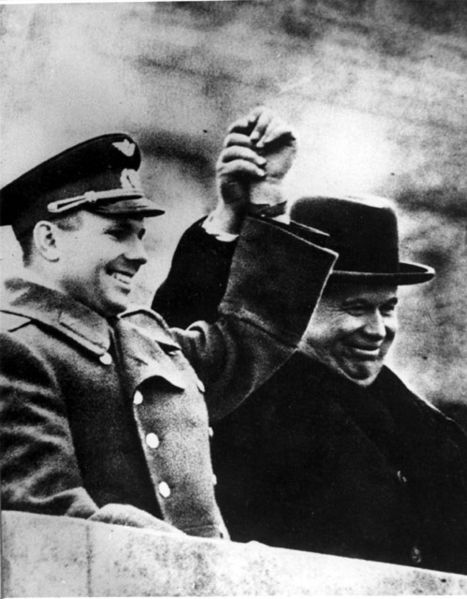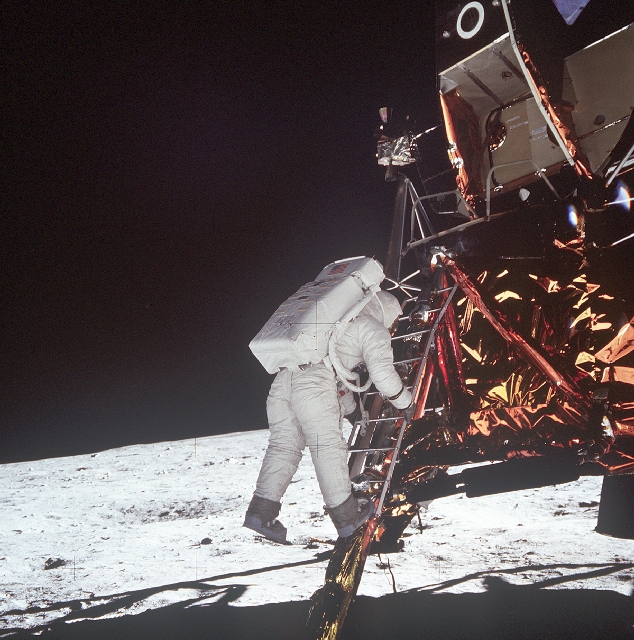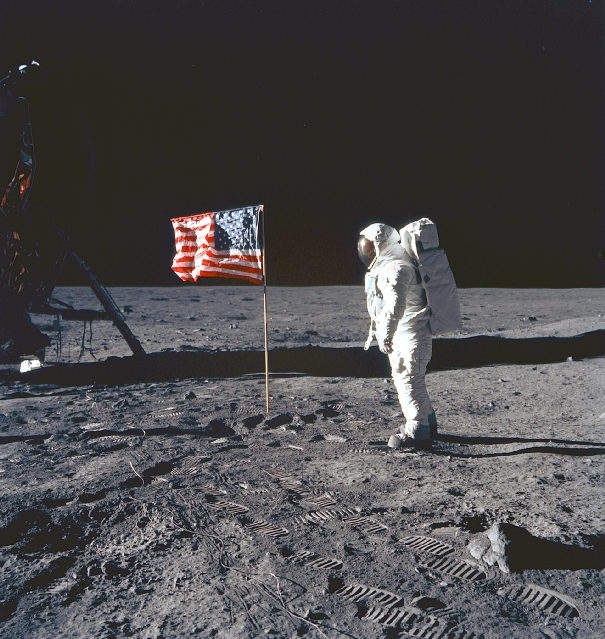The Space Age Turns 50 - Ideas of Space Flight from the Early 20th Century
The Influence of Sputnik

Front page of The New York Times, October 5, 1957
Though news reports from October of 1957 do not reveal an immediate panic from the Soviet Union's successful launch of Sputnik, eventually there became fears of a "missle gap" and concerns about communist missles raining down nuclear weapons on the U.S.
The simple fact that the Soviet Union, a presumably technologically backwards nation, was able to beat the United States in this achievement, was a sign to many that the American educational system was failing. One reaction to Sputnik, was an increase in funding for science education across all levels.
But this was only the first space race. A second race involved putting people into space. This was another race won by the Soviets on April 12, 1961 when Yuri Gagarin completed one orbit of the Earth.
The third race, was the race for the moon. John F. Kennedy declared this a goal of the U.S. to be achieved before the end of the 1960s. The United States won this race on July 20, 1969 when Neil Armstrong and Buzz Aldrin set foot on the moon in the Apollo 11 mission.
 Today, our manned space missions are focused on the International Space Station. Humanity has put satellites not only around the Earth, but around Venus, Mars, Jupiter, and Saturn.
In addition, flyby missions have explored Uranus, Neptune, comets, and asteroids.
The first launch of a satellite 50 years ago was just the beginning of exploration that is ongoing today, and will continue tomorrow.
Today, our manned space missions are focused on the International Space Station. Humanity has put satellites not only around the Earth, but around Venus, Mars, Jupiter, and Saturn.
In addition, flyby missions have explored Uranus, Neptune, comets, and asteroids.
The first launch of a satellite 50 years ago was just the beginning of exploration that is ongoing today, and will continue tomorrow.
Go to References section.










